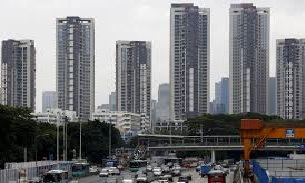The government is in the process of formulating a policy to limit the height of high-rises in core areas of Bengaluru city — the entire area within the Peripheral Ring Road — in a bid to ease stress on existing infrastructure. The decision appears especially driven by the slow pace of building mass transit systems such as the Metro. Bengaluru has a population density of 4,381 per square km as per the 2011 population census.
Urban development department (UDD) officials say they are considering “limiting the number of floors” permitted for construction. “However, this is in correlation to the government’s policy of transit oriented development (TOD) and challenges with regard to stress on basic infrastructure within city limits,” said a senior UDD official.
UDD sources say a decision on capping the number of floors in high-rise structures will be taken in consultation with the fire service department, which must sign-off on multistory constructions. Another criterion is the extent of public transport available and the load-carrying capacity.
“As per the TOD policy, depending on available public transport and the extent of carriageway, we will allow an increased number of floors. But this has to be matched with the basic infrastructure challenge,” said the UDD official.
However, urban experts believe sanction for high-rise structures must be in correlation with the extent of public transport available. Urban expert RK Misra told TOI it will be far more difficult for the government to provide infrastructure if the city expands horizontally.
But Misra did sound a word of caution, saying: “However, vertical development will work only with efficient transport infrastructure.”
Some urban experts were derisive of the move, saying decisions with regard to high-rises is purely based on pressure from the real estate industry, which cannot afford land in core city areas and thus want to develop on the outskirts.

